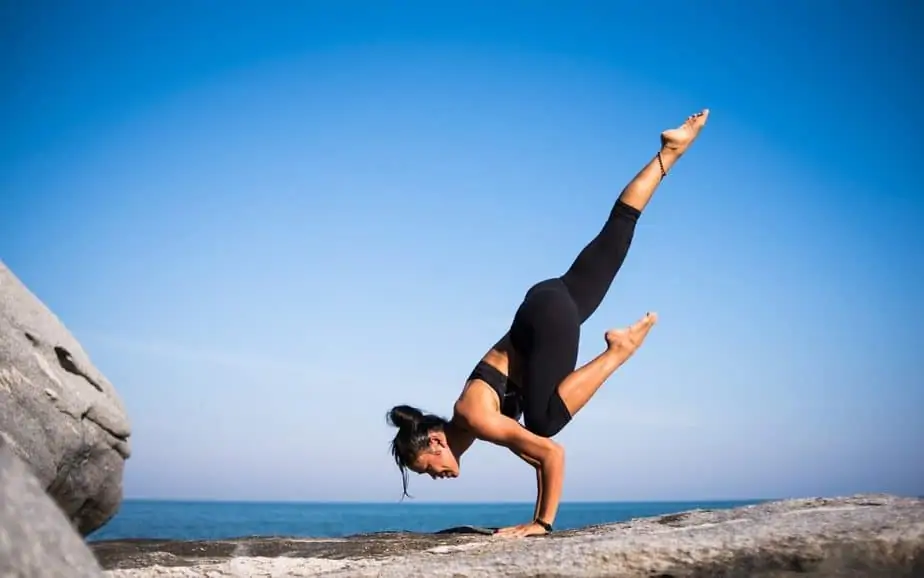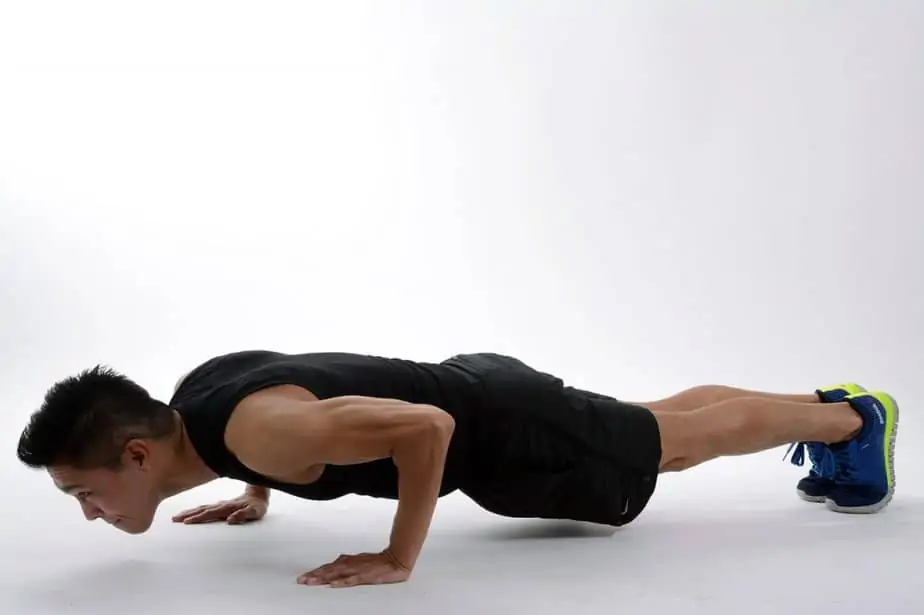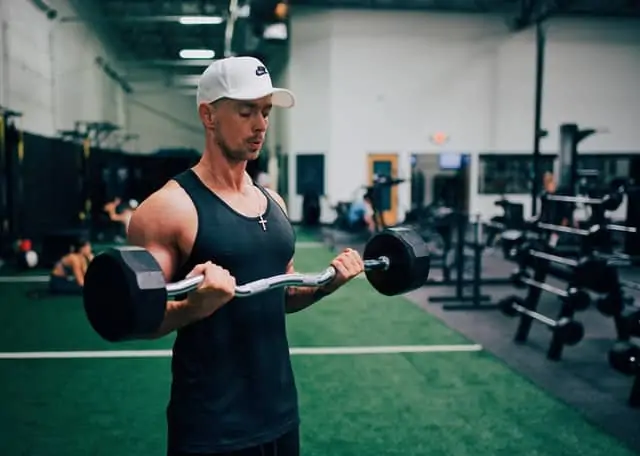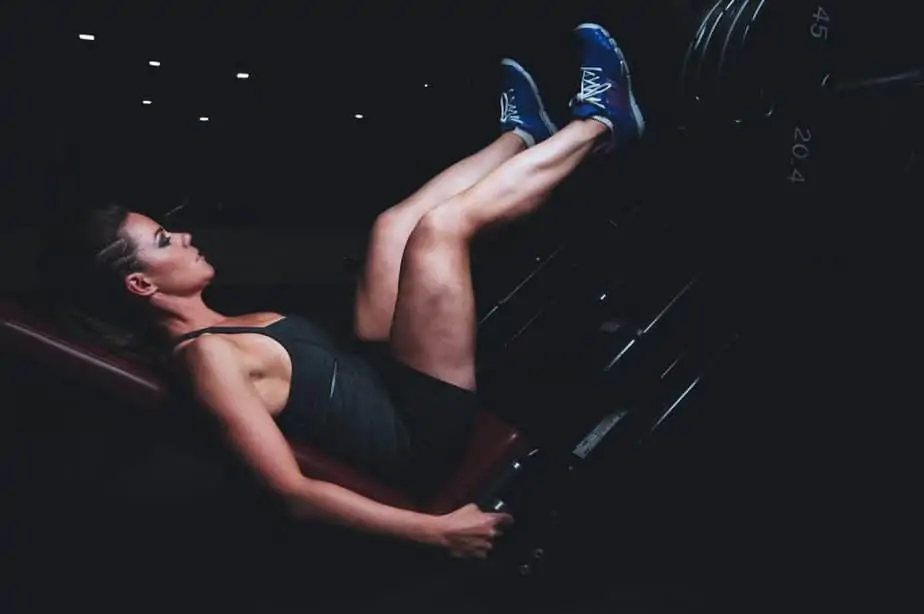Power and strength are two words that are sometimes interchanged when talking about training and the ability to move heavy things, however, they are two very different things. Strength is the ability of the body to overcome resistance. Power is the ability of the body to overcome resistance in the shortest period.
What is Strength?
Strength is defined as being “the ability to exert force to overcome the resistance” and is measured in Newtons. Strength is the quality or state of being strong, or the capacity of an object or substance to withstand great force or pressure.
In terms of physicality, strength is the amount of force a muscle group can produce. Strength training involves the three big lifting exercises at the gym – the bench press, the deadlift, and the squat, and the person who can produce the most force is the strongest. Powerlifting is an example of a strength exercise that measures strength in one repetition.
What is Power?
Power is defined as “the ability to exert force in the shortest period” and is measured in Watts. Power is all about speed – it’s the ability to exert force rapidly. Simply put, speed plus strength equals power.

Speed plus strength equals power.
What is Strength Training?
Strength training are exercises designed to improve strength and endurance by overcoming resistance. Also known as resistance training, strength training comprises moving a certain amount of weight from point A to point B to build stronger muscles.
Strength training usually incorporates weight training, however, it can include a variety of other training techniques such as calisthenics, isometrics, and plyometrics. Strength training can be used to build strength for both daily tasks and all sporting activities.
$5.95 Ground Shipping On Any Purchase In The US! – Shop Now!

Calisthenics is another form of strength training.
What is Power Training?
Power training differs from strength training in that it focuses on overcoming resistance with speed or in a certain amount of time. This type of training will involve lower resistance levels than strength training, but faster movement velocity. Optimal power is how fast a force can be exerted with control. Progressive resistance exercises are another form of power training.
For example, if you have to cross a busy road, it will be the strength that enables you to walk across the road, but power that will enable you to cross the road with speed.
| Strength Training | Power Training |
| Strength training comprises moving a certain amount of weight from point A to point B to build stronger muscles. | Power training differs focuses on overcoming resistance with speed or in a certain amount of time. |

Power training differs focuses on overcoming resistance with speed or in a certain amount of time.
Why is Strength Training Important?
Strength and strength training is important to maintain a healthy body and mind and can make a huge difference in everyday life, particularly for older people. But how does being strong affect our daily lives?
1. Improves Physical Health
Strength training not only increases muscle mass, strength, and tone but also builds up ligaments and tendons and increases bone density, which decreases the risk of osteoporosis. Having a strong body can reduce a variety of ailments, chronic conditions, and diseases, such as obesity, diabetes, lower back pain, and heart disease.
2. Improves Mental Health
Improving mental health is just as important as having a strong body. Being strong builds confidence and self-esteem fights anxiety and depression and can make you feel great overall.
3. Maintains Muscle Mass
As we grow older, we lose muscle mass, and it becomes more challenging to build muscle mass as we age. Strength training and building a strong body early in life and maintaining that muscle mass will make a huge difference later in life.
4. Boosts Metabolism
Muscles burn calories and strength training is a great metabolism booster. The more muscle you have on your body, the more calories you will burn. The body continues to burn calories after exercising, and muscular bodies tend to burn energy long after the last rep is done.
5. Enhances Quality of Life
A strong body equals a strong mind and by improving your strength, you can improve the overall quality of your life. Having a strong body is not all about having big muscles – being strong also develops good balance and coordination; improves core strength and posture; and increases your endurance during exercise.

A strong body develops good balance and coordination.
What Are the Basics of Strength Training?
As we already know, strength is the amount of force a muscle group can produce. Strength training focuses on certain aspects, including:
1. Compound Movements
Strength training focuses on compound movements, which are movements that engage more than one muscle group at a time. The most popular compound lifts at the gym include the bench press, the deadlift, the overhead press, and squats.
2. Repetitions
Strength training typically focuses on heavier loads or weights at lower repetitions. For example, if you wanted to build strength at the gym, you would do between one and five reps in any given set. If you wanted to build muscle mass (hypertrophy), you would increase the number of reps to between six and 12. This would make your muscles bigger, but not necessarily increase your strength.
3. Heavier Loads
To build strength, you will need to lift heavier loads with fewer reps. The amount of weight you can lift at any given time is measured by your 1 RM (repetition maximum). Strength training typically works off a minimum of 80% of your 1RM and upwards. The higher the percentage of your 1RM, the fewer the reps you will do.
4. Longer Rest Periods
Strength training requires longer rest periods so the muscles recover. Even though there are fewer reps, you are lifting heavier weight, so a good rest period (3-5 minutes) is optimal.

To build strength, you will need to lift heavier loads with fewer reps.
Power
Power is the ability to exert as much force as possible in the shortest amount of time. Simply put, power = strength + speed. The loads or weights are slightly lower when it comes to power exercises, but the reps are much faster. An example of a power discipline would be Olympic weightlifting, which involves a “snatch-and-jerk” action.
Why is Power Important?
There are many benefits to improving your power. These include:
1. Improved Cardiovascular Endurance
Power training involves a lot of high-intensity hopping, jumping, and skipping to increase reaction time and this works wonders for your cardiovascular endurance. This type of training not only teaches your body to pump high volumes of blood to the organs but helps the body return to its resting rate faster. Cardiovascular exercise is important to keep your heart healthy.
These high-intensity exercises also improve movement efficiency, and your body will learn how to generate force while using the least amount of energy possible, allowing you to do more without expending extra energy.
2. Quicker Reaction Time
Power training improves reaction time and your ability to react to things quickly will improve. This helps prevent injuries not only in the gym but in everyday life. As we get older, we become more susceptible to falls, and having a quick reaction time can help prevent this.
3. Improves Balance and Coordination
Power training involves dynamic exercises such as hopping, jumping, and skipping and these improve balance and coordination, as well as body and spatial awareness.
4. Improves Day-to-Day Skills
Power training will allow you to walk and run faster, jump higher, and move more efficiently without expending extra energy and this can be beneficial to simple daily life tasks like carrying groceries to crossing the road.

Power training improves reaction time.
Best Strength Training Exercises
Here are seven basic strength movements to build strength.
1. Squat
Squats are one of the purest tests of strength as they incorporate almost all the muscles in your legs and core. Squats can be done with or without additional weight and in several ways, including a front squat, back squat, and goblet squat.
How to perform a squat:
- Stand with your feet slightly wider than hip-width apart.
- As you bend your knees, lower your hips into a squat and keep your back flat.
- Continue lowering yourself until your thighs are parallel to the floor.
- Push your heels into the floor and slowly straighten your legs to return to your starting position. start.

Squats are one of the purest tests of strength.
2. Deadlift
Deadlifts are one of the best exercises to train the muscles at the back of your legs like the hamstrings and glutes from a stable base. There are several varieties of deadlifts for all levels of athlete from traditional barbell deadlifts in which the weight is pulled from the floor to Romanian deadlifts where weight is lowered with the hip hinge movement and the sumo deadlift which involves a wider stance with the toes pointing outwards.
The most important aspect of performing deadlifts is form and stance to protect the lower back. If you are a beginner to deadlifts, always start with lightweight and build up slowly to prevent injuries, and always lift with your legs and not your back.
How to perform a deadlift:
- Stand with your feet apart and your knees slightly bent.
- Keep your arms relaxed with a dumbbell in each hand in front of your quads.
- Hinge your hips, bend your knees slightly, and push your bottom backward.
- Keep your back flat and lower the weight along your shins.
- Your torso should be almost parallel to the floor.
- Keep your core engaged, push through your heels to stand up straight, and return to the starting position.
- Keep the weight close to your shins as you pull upwards into a standing position.
- Squeeze your buttocks once standing.

Deadlifts are one of the best exercises to train the muscles at the back of your legs.
3. Glute Bridge
Glute bridges are good exercises for working on the glutes, which are the largest muscles in the lower half of the body. Strong glutes provide excellent power in the legs, as well as super core stabilization.
How to perform a glute bridge:
- Lie on your back and bend your knees while keeping your feet flat on the floor at hip-width apart.
- Rest your hands under your hip bones with a dumbbell in each.
- Squeeze your abdominal muscles and your glutes.
- Push through your heels to lift your hips a few inches off the floor until your body forms a straight line from your shoulders to your knees.
- Hold this position for a second before slowly lowering your hips to return to the starting position.

Glute bridges are good exercises for working on the glutes. Glute Bridge One Leg by Strength and Health Science / CC BY-NC-ND 2.0
4. Push-Ups
One of the best signs of strength is the ability to move your body weight and a good way to do this is by doing push-ups. Push-ups work all the pressing muscles in the upper body, including the chest, shoulders, and triceps.
How to perform a push-up:
- Begin in a high plank position with hands shoulder-width apart and your palms flat on the floor.
- Your shoulders should be stacked directly above your wrists, your core and glutes engaged, and your legs extended behind you.
- Bend your elbows and lower your body to the floor. Drop to your knees if needed.
- Push through the palms of your hands to straighten your arms.

Push-ups work all the pressing muscles in the upper body.
5. Bent-Over Row
The bent-over row uses all the pulling muscles in your upper body, including the back, the biceps, and the shoulders. This exercise requires the core and the legs to maintain a strong position. Once you have mastered the bent-over row, you should have enough strength to do a bodyweight pull-up, which is a great indicator of strength.
How to perform a bent-over row:
- Stand with your feet at hip-width apart.
- Hold a dumbbell in each hand with your arms resting at your sides.
- Engage your core, hinge forward at the hips, and push your buttocks backward.
- Bend your knees and shoulders straight. The amount of bend will depend on the flexibility of your hamstrings and the mobility of your hips.
- Pull the weights up toward your chest and do a row movement.
- Keep your elbows tucked close to your body and squeeze your shoulder blades for two seconds at the top of the movement, allowing your elbows to move past your back as you bring the weight toward your chest.
- Extend your arms and slowly lower the weights to the floor.

The bent-over row uses all the pulling muscles in your upper body.
-
Hollow-Body Hold
The hollow-body hold creates total body tension and maintains core stability, which will form an excellent foundation for many other compound movements like the deadlift and the pull-up. You can modify the traditional hollow-body hold if it is too difficult by bending your knees or keeping your arms forward instead of overhead.
How to perform a hollow-body hold:
- Lie on a mat with your face up, your legs extended, and your arms straight over your head.
- Keep your arms close to your ears.
- Engage your abs and press your lower back into the ground.
- Squeeze your thighs and your glutes together, point your toes, and lift your legs off the ground.
- Lift your shoulders off the ground and keep your head in a neutral position so that you are in the shape of a banana. Your mid-back and legs should be off the ground.
- Hold this position for a certain amount of time.

The hollow-body hold creates total body tension and maintains core stability.
7. Single-Leg Moves
Single-leg exercises are essential for building strength for exercises such as bilateral lifts, step-ups, single-leg deadlifts, and reverse lunges. Single-leg moves require super core stability and you can add additional weight for an extra challenge.
How to perform single-leg moves:
- Stand with your feet shoulder-width apart and engage your core.
- Take a step backward with your right foot, landing on the ball of your right foot.
- Keep your right heel off the ground.
- Bend both knees to 90 degrees as you sink into a lunge.
- Keep your core engaged and your hips tucked.
- Push through the heel of your left foot and return to your starting position.

Single-leg exercises are essential for building strength.
What Are the Basics of Power Training?
Power training revolves around two components:
- Training to increase the amount of force generated – that is the amount of weight you lift.
- Training to increase the speed at which this is performed.
Power can be developed with three specific training types that are designed to boost your fast-twitch muscle fibers to increase your explosive power. These include:
- Ballistic Training
- Dynamic Training
- Plyometric Training
Ballistic Training
Ballistic training, also known as trajectory training, involves an athletes’ body or an external object explosively projected into a flight phase. Ballistic movements differ from plyometric movements by the amount of time spent on the ground during the landing phase. If the landing phase is longer than three seconds, then the movement is ballistic. Ballistic exercises include jumping, throwing, striking, overhead medicine ball throws, and rotational medicine ball tosses.
Dynamic Training
Dynamic training is also known as speed work and concentrates on explosive strength. The focus of dynamic training is lifting compound movements with a submaximal load at maximum speed. The weight you are lifting should only be 50-60% of your 1RM and no more than five reps. Rest time should be slightly longer at between three and four minutes.
Plyometric Training
Plyometric training is a form of high-intensity and high-impact training. It is similar to ballistic training in that it uses the same exercises such as jumping, hopping, jumping squats, skipping but with a shorter landing time.
Plyometric training focuses on the stretch-shortening cycle of movement, which has two parts: eccentric contraction (the lengthening of a muscle) and concentric contraction (the shortening of a muscle). Contact time with the ground during landing is short – under three seconds.
 Ballistic exercises include overhead medicine ball throws and rotational medicine ball tosses.
Ballistic exercises include overhead medicine ball throws and rotational medicine ball tosses.
Which is Better – Strength Training or Power Training?
The answer to this question would depend on your goals. Strength training can benefit athletes in a wide variety of sports as it improves physical and mental health, builds muscle mass, and boosts metabolism. Building strength can also improve daily life and longevity.
Power training is beneficial to athletes who need explosive speed and strength and need power for sprinting faster, jumping higher, or lifting weight explosively.
Best Power Training Exercises
Here are five basic exercises to help you increase your power.
1. Squat Jumps
Squat jumps are a fantastic exercise for developing power in the quads and the lower body, strengthening and stabilizing the core, and improving vertical ability.
How to perform squat jumps:
- Stand with your feet slightly wider than hip-width apart.
- As you bend your knees, lower your hips into a squat and keep your back flat.
- Continue lowering yourself until your thighs are parallel to the floor.
- Push your heels into the floor and jump into the starting position with your legs bent.
- Hold the position for 20 seconds before repeating another squat jump.

Squat jumps are a fantastic exercise for developing power in the quads and the lower body.
2. Medicine Ball Squat Throws
Medicine ball squat jump throws are great for building explosiveness if the ball is thrown transferring your body off the ground in a squat jump.
How to perform medicine ball squat jump throws:
- Stand with your feet slightly wider than hip-width apart.
- Hold a medicine ball at chest level.
- As you bend your knees, lower your hips into a squat and keep your back flat.
- Continue lowering yourself until your thighs are parallel to the floor.
- Push your heels into the floor and jump into the starting position with straight legs.
- While you jump, throw the medicine ball above your head as high as you can.
- Let the medicine ball fall to the ground, pick it up and repeat.

Medicine ball squat jump throws are great for building explosiveness.
3. Barbell Curl
Barbell curls help to build and develop strength in the arms, specifically the forearms and the biceps.
How to perform barbell curls:
- Stand with a straight back and upright upper body while holding a barbell at a shoulder-width grip with your palms facing forward and elbows tucked close to your body.
- Contract your biceps and forearms and curl the barbell forward to shoulder height with only your forearms moving.
- Slowly lower the forearms until your arms are in the original starting position.

Barbell curls help to build and develop strength in the arms.
4. Leg Press
Leg presses are a good way to develop leg power if you struggle with squats. Leg presses can be done on a machine at the gym.

Leg presses are a good way to develop leg power if you struggle with squats.
5. Bosu Ball Balance Exercises
A strong core is the basis for building power, so balancing and core strengthening exercises are a must during power training. There are numerous ways to build core strength, ranging from crunches, sit-ups, Pilates, and yoga exercises, while balancing exercises can be done on a Bosu board or a “wobble board.”

A strong core is the basis for building power.
Final Thoughts
Strength and power training are two different exercise concepts that both have advantages to an exercise regime, depending on your goals. Strength is the quality or state of being strong, or the ability to move a certain weight from one point to another, while power is the ability to exert force at speed. Both exercise regimes develop a strong, healthy body and cardiovascular fitness, as well as improve daily life.
Give your connective tissues some love with REJUVIX JOINT™ by Xcelerated Performance Products®








